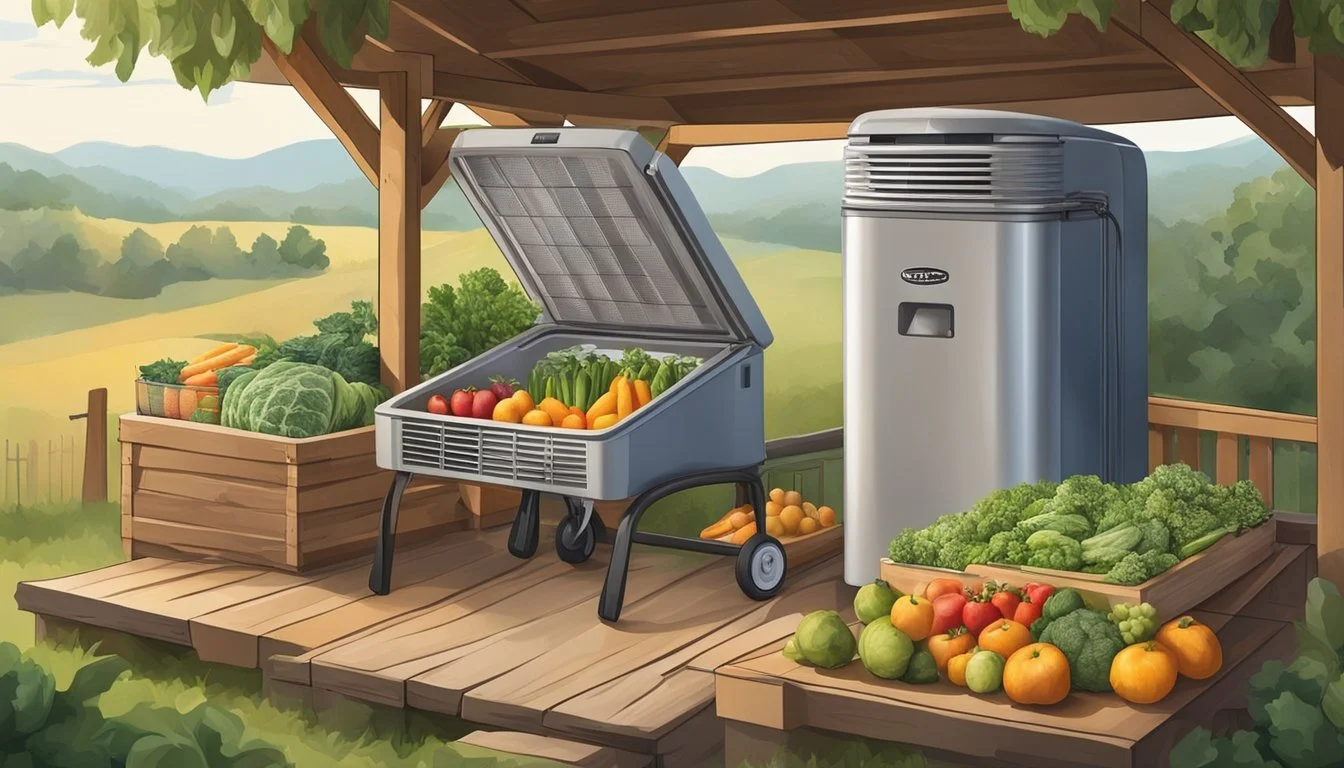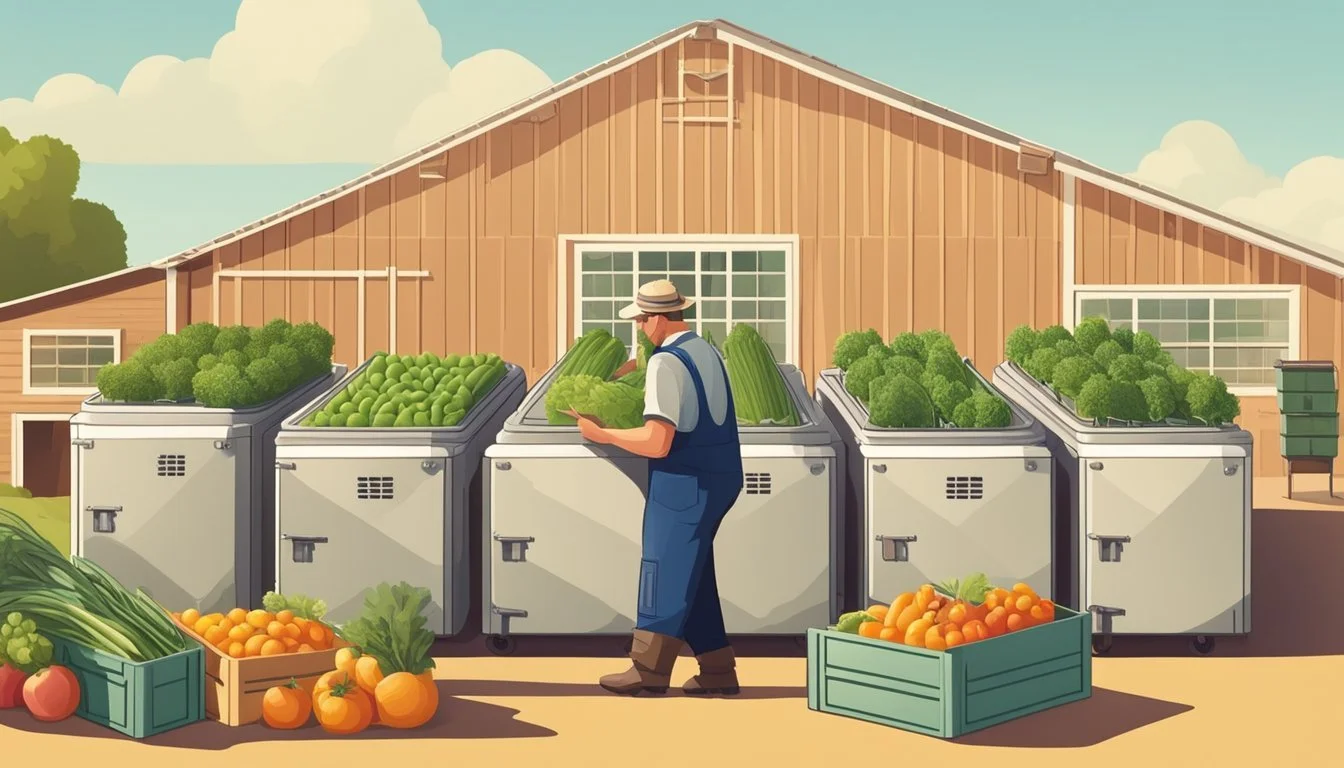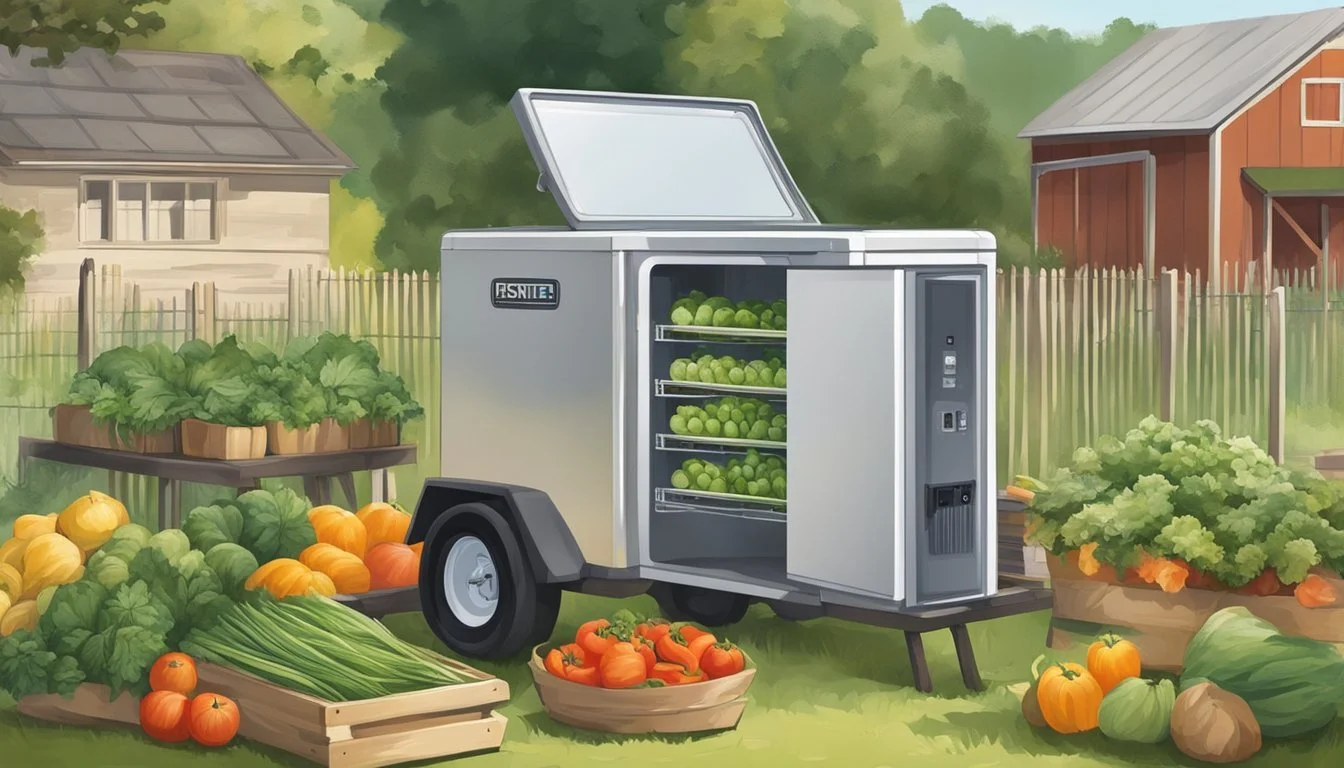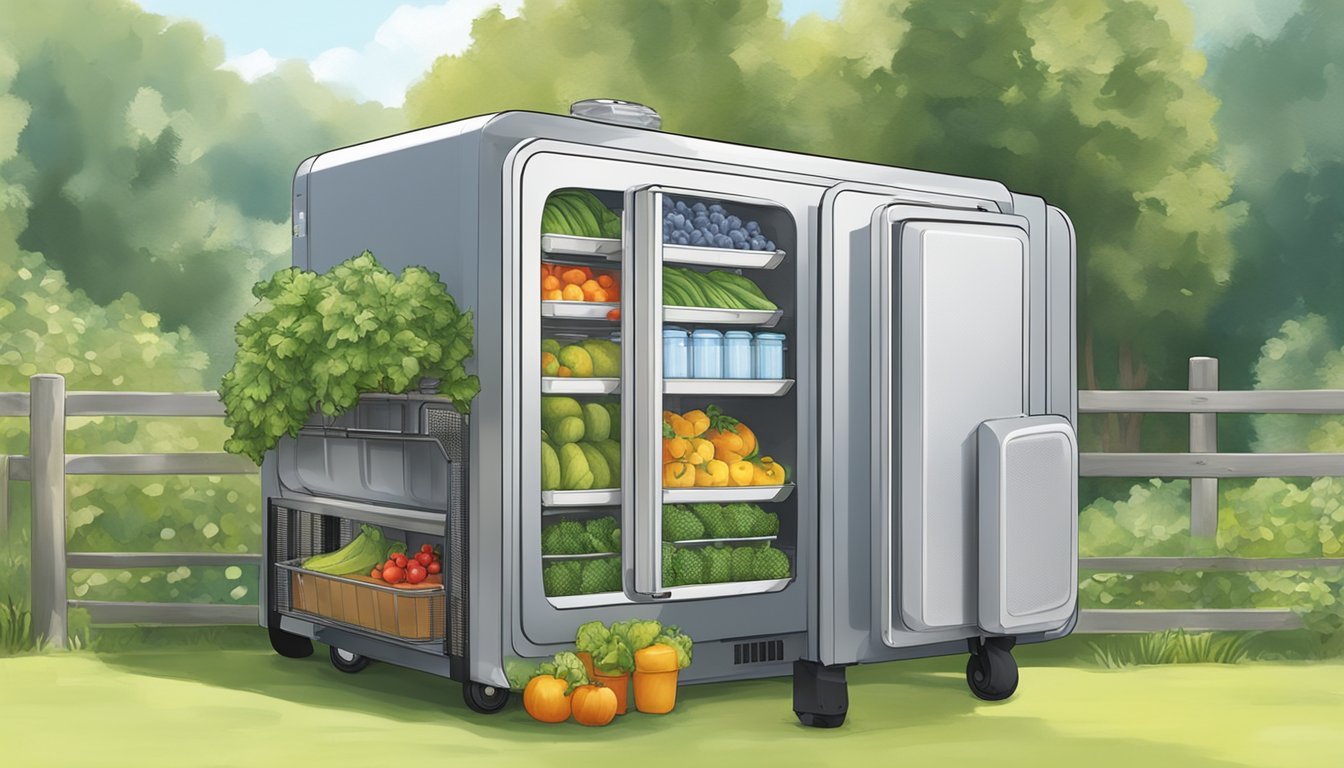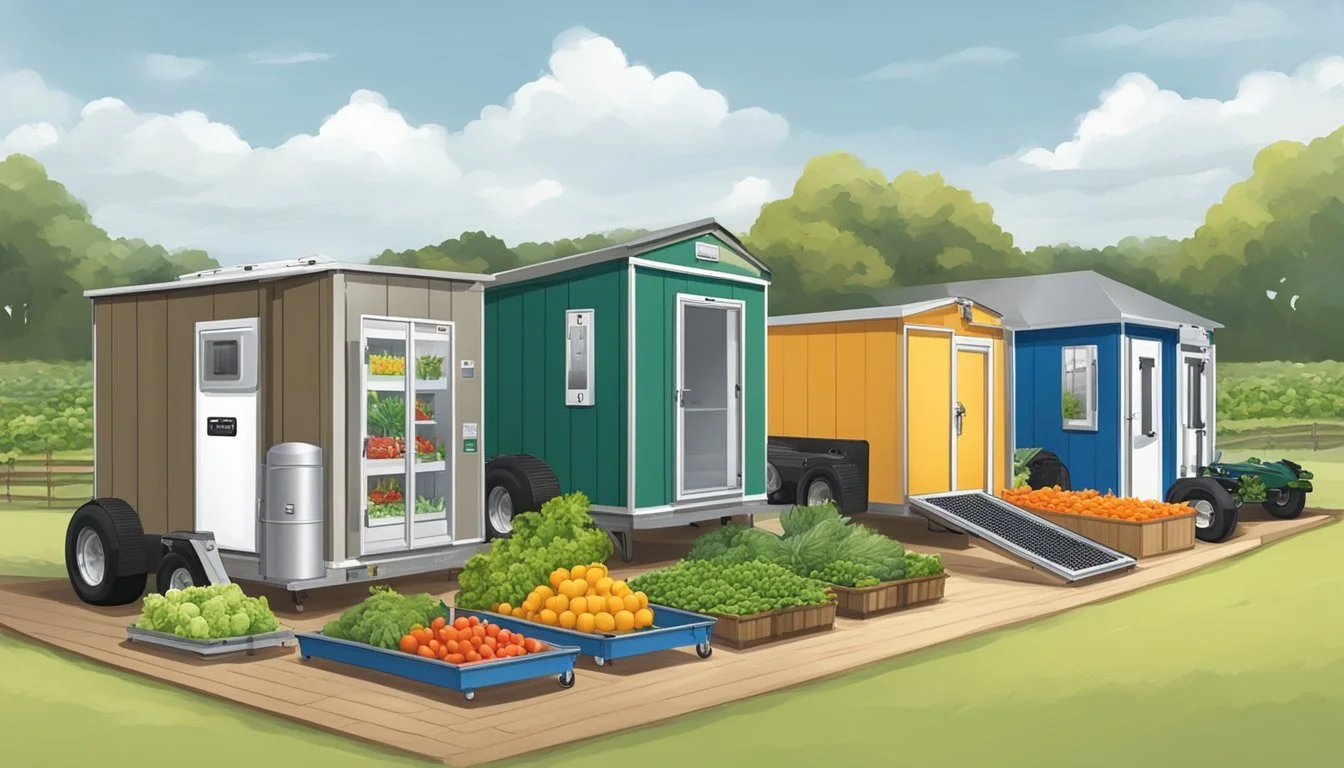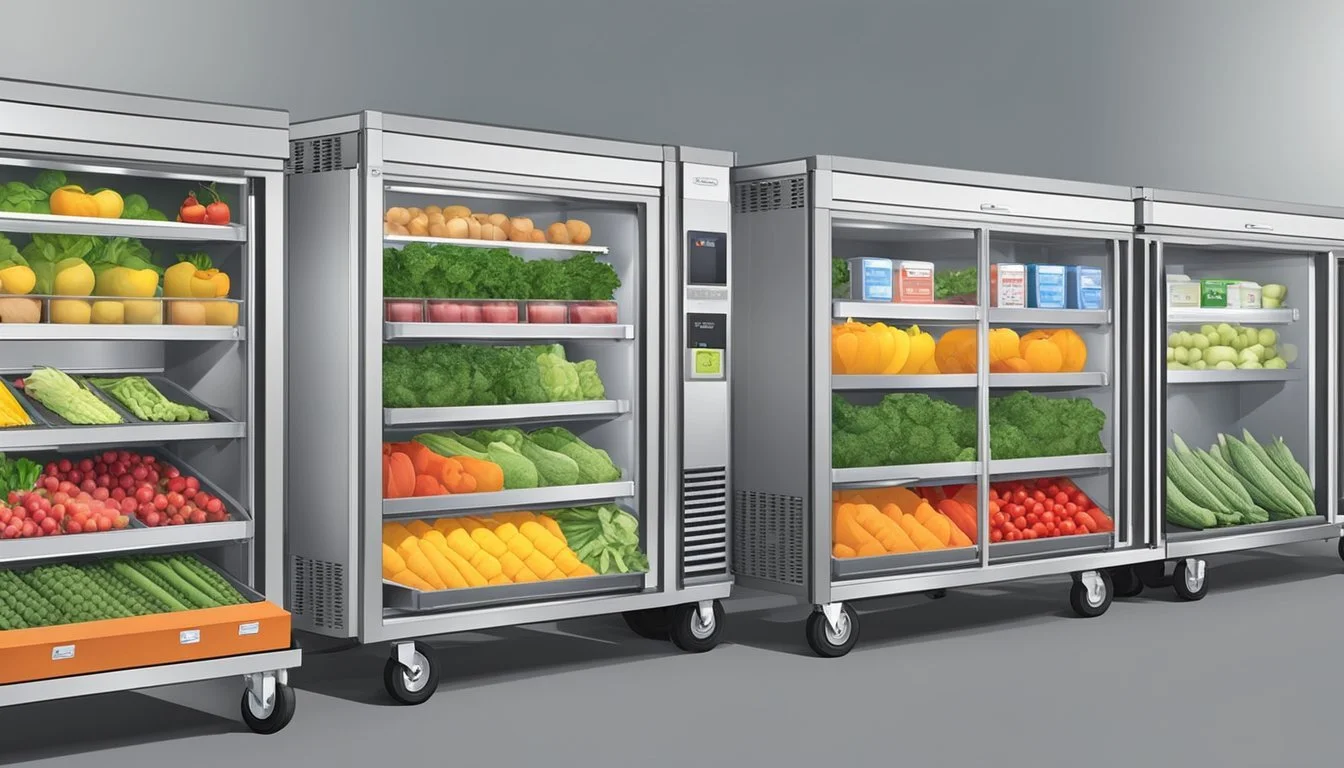Top Portable Refrigeration Units for Fresh Produce on the Homestead
Keeping Your Harvest Cool and Crisp
Homesteaders looking for effective ways to keep their produce fresh face unique challenges that demand reliable solutions beyond the standard household refrigerator. With the absence of conventional electricity in many remote or off-grid homesteads, portable refrigeration units have become a critical component for food preservation. These units utilize alternative energy sources such as propane, natural gas, or solar power, offering the flexibility needed for a variety of homesteading situations.
The market offers an array of portable refrigeration options tailored to the needs of the modern homesteader. For instance, some compact refrigerators are designed for easy transport, making them perfect for mobile applications like farmers markets or even moving produce around the property. Others are built to withstand rugged, outdoor environments without compromising performance, ensuring that vegetables and fruits are stored at optimal temperatures to maintain freshness and nutritional value.
Selecting the top portable refrigeration units involves considering factors like energy efficiency, capacity, durability, and cost-effectiveness. Units such as the SMETA Portable Refrigerator have gained popularity among budget-conscious homesteaders, while solar-powered options provide an eco-friendly alternative for those looking to reduce their carbon footprint. As homesteading harmonizes with nature, matching the right refrigeration technology to individual needs is crucial for a sustainable and self-sufficient lifestyle.
Understanding Portable Refrigeration Units
Portable refrigeration units are essential for homesteaders who need to preserve fresh produce without relying on traditional stationary refrigerators. These units come in various sizes and are designed to be energy-efficient, utilizing both AC and DC power sources. This versatility allows them to operate in a wide range of settings, from grid-connected areas to off-grid locations.
Portable refrigerators, commonly known as portable fridges, have become increasingly sophisticated, offering features that rival their stationary counterparts. They ensure that produce stays at a consistent temperature, critical for food safety and quality.
The portable fridge systems usually include:
Compressor: Pivotal for cooling the interior.
Refrigerant: A substance, often freon, used to absorb and remove heat.
Condenser coils: Tubes for the refrigerant to circulate and release absorbed heat.
AC power is typically used when available, while DC power makes these refrigerators ideal for hooking up to solar panels or car batteries, reinforcing their portability.
The convenience of these portable units does not detract from their performance. Many models feature digital controls for precise temperature management and can switch automatically between AC and DC power to provide continuous refrigeration.
When selecting a portable refrigeration unit, homesteaders should consider the following:
Energy Consumption: Opt for energy-efficient models.
Capacity: Match the unit’s size to your produce storage needs.
Temperature Range: Ensure it's suitable for all your refrigeration requirements.
Power Source Compatibility: It should work with your available power setups.
With the right portable refrigerator, homesteaders can effectively extend the shelf life of fresh produce, contributing to a more sustainable and self-sufficient lifestyle.
Choosing the Right Size and Capacity
When selecting a portable refrigeration unit for fresh produce on the homestead, understanding the capacity needs is crucial. The unit should accommodate a variety of produce, from apples and lemons to berries and bell peppers, without compromising on cooling efficiency.
Storage Capacity:
Small units (10-20 quarts) are suitable for homesteaders looking to store smaller quantities of berries or lemons.
Medium units (21-50 quarts) provide ample space for vegetables like bell peppers and a moderate fruit harvest.
Large capacity units (over 50 quarts) can handle bulk storage needs, including large fruit like apples and substantial quantities of vegetables.
Consider the following when choosing a size:
Weekly Harvest: Estimate the average weekly harvest of fruits and vegetables.
Consumption Rates: Determine how quickly the produce is consumed or sold.
Produce Sizes:
Smaller produce, such as berries, requires careful stacking to avoid damage.
Hardy vegetables, like bell peppers, utilize space more efficiently.
A well-chosen unit ensures that fruits and vegetables remain fresh longer, retaining their nutritional value and flavor. Homesteaders must balance between available space, energy consumption, and the refrigeration needs to find the most efficient size for their fresh produce storage.
Temperature Control Features
When seeking the best portable refrigeration units for maintaining the freshness of produce on a homestead, temperature control is a pivotal feature. Good temperature management ensures the maximum freshness of food items, thus extending their shelf life and quality.
Adjustable Thermostat: Most high-quality portable refrigeration units come with an adjustable thermostat. This allows for precise temperature settings, typically ranging from 32°F (0°C) to 40°F (4°C), the safe zone for most perishable foods.
Temperature Range: A broader temperature range offers flexibility in storing a variety of produce. Some units provide freezing capabilities, allowing temperatures to dip below 32°F. This is especially useful for preserving meat and dairy products for extended periods.
Safe Zone for Freshness: 32°F - 40°F
Freezing Capability: Below 32°F
Temperature Control Systems:
Manual: Allows hands-on control over the temperature setting, usually via a dial or button within the unit.
Digital: Offers a digital display and controls, enabling more precise adjustments and monitoring.
App Connectivity: Advanced units can connect to Wi-Fi or Bluetooth, enabling remote temperature control through a smartphone application.
By ensuring their refrigeration units possess reliable temperature control features, homesteaders can be confident that their fresh produce is kept in optimal conditions, safeguarding its quality and edibility.
Energy Efficiency and Power Sources
When selecting a portable refrigeration unit for storing fresh produce on a homestead, one should consider both energy efficiency and available power sources. Energy-efficient models are not only better for the environment but can also reduce operating costs over time.
Compression fridges are known for their efficiency. They can operate on various power sources—be it 12V/24V or 120V—making them versatile for homestead use. Models with high-efficiency compressors tend to use less energy, which can contribute to lower electricity bills. Also, those refrigerators with efficient LED lighting further reduce energy consumption when accessing produce.
Portable refrigerators may also be battery-powered, providing convenience and portability. It is crucial for homesteaders to evaluate the capacity and longevity of battery-powered units, ensuring that they meet the demands of preserving fresh produce without constant recharging.
Power Source: 12V/24V (DC)
Pros: Energy-efficient, mobile
Cons: May require battery or solar system
Power Source: 120V (AC)
Pros: Consistent power, high capacity
Cons: Less mobile, requires grid or generator
Power Source: Battery-powered
Pros: Highly portable, convenient
Cons: Limited by battery life and capacity
Homesteaders should consider units that boast dual-zone functionality; fridges and freezers separated within the same unit offer flexibility in temperature control for different types of produce. In addition, a compressor-driven system can be beneficial for ensuring consistent temperature regulation, crucial for preserving food.
Ultimately, the choice of a portable refrigeration unit should align with the specific needs of energy usage and the availability of power sources on the homestead. Efficiency does not sacrifice performance; rather, it enhances the sustainability of off-grid or energy-conscious living.
Durability and Maintenance
When selecting portable refrigeration units for homestead use, durability is paramount. These units typically face varied environmental conditions, from exposure to elements during outside events to the vibrations of a moving vehicle. High-quality materials such as reinforced exteriors and corrosion-resistant components are essential for longevity. Models with sturdy construction prevent damage from accidental impacts or rough handling.
For maintenance, the technology within portable refrigerators has advanced, simplifying upkeep tasks. Units with easy-to-clean surfaces and removable parts decrease the time spent on cleaning. Likewise, refrigeration systems using frost-free technology mitigate the need for regular defrosting.
Homesteaders should consider the following in their routine checks to ensure smooth operation:
Exterior Inspection: Look for any cracks or breaks that could impact insulation.
Seal Integrity: Check that door seals are free from damage to maintain energy efficiency.
Ventilation: Keep vents clear of debris to avoid overheating and ensure optimal performance.
Most portable refrigeration units made for homestead use integrate smart technologies. They may include diagnostic systems that relay maintenance alerts, coupled with smartphone apps that let users monitor temperature and adjust settings remotely—ensuring produce stays fresh with minimal manual intervention.
Maintenance schedules can vary depending on usage patterns and models. However, they should always adhere to the manufacturer's guidelines to uphold the unit's warranty and function.
Specialized Units for Diverse Needs
Homesteaders require a range of portable refrigeration solutions to meet the varying demands of food preservation and storage. These specialized units are designed to optimize freshness and ensure food safety across different environments and use cases.
For Road Trips and RVs
For those who take road trips or own an RV, portable freezers and refrigerators are crucial. The ICECO VL60, for instance, is a dual-zone freezer that allows you to store both frozen and refrigerated snacks and perishables simultaneously. This versatility ensures that you maintain maximum freshness even when on the move. Many models come equipped with features like baskets for organization, handles for easy carrying, and covers for protection.
For Trucks and Vans
Truck and van owners often require robust refrigeration units that can be either built-in or freestanding to accommodate the varying sizes and shapes of vehicles. Thermo King, a prominent manufacturer, offers a wide variety of units that can be tailored to the exact dimensions and cooling requirements of different vehicle types, ensuring that perishable food items, like fresh flowers or frozen fish, are transported safely.
For Maximum Freshness Preservation
To achieve the maximum freshness of perishables, homesteaders should look for refrigeration units explicitly designed for freshness preservation. These include features like adjustable temperature controls, digital displays, and high-quality insulation that keeps temperature consistent, which are all critical for food safety and extending the shelf life of fruits and vegetables.
For Homestead and Large Volume Storage
Those in need of large volume storage on their homestead may opt for units that have substantial storage capacity. These larger portable freezers and refrigerators provide ample space for an abundant harvest, making them ideal for seasonal peaks when the preservation of large quantities of fresh produce is necessary.
For Compact and Specialty Uses
For the homesteader with specialized or compact space requirements, there are smaller mini fridge options or portable refrigeration units designed for specialty uses. These can range from storing skincare products at precise temperatures to compact models that are perfect for keeping essential perishable food items fresh in small spaces.
Cost Considerations and Best Value Options
When selecting a portable refrigeration unit for keeping fresh produce on the homestead, cost is a significant factor. Homesteaders should search for options that deliver efficiency and reliability at a reasonable price. Units with dual-zone functionality offer the convenience of separating fruits and vegetables from other perishables like meats, making them a cost-effective choice.
Affordability
These units often come with price tags that reflect their capabilities. Compressor-driven systems, which can run on multiple power sources, are typically more expensive but are valued for their low wattage usage. Solar-powered or battery-operated models can also save homesteaders on energy bills in the long run.
Storage Space
A unit with ample storage is paramount. It should be large enough to hold a significant amount of produce but compact enough not to occupy excessive space. Most units' capacities are measured in liters, with options like a 55-quart equivalent to approximately 52 liters, creating a useful balance between size and storage space.
Colors and Aesthetics
While colors may not impact performance, they play a role in the product's appeal. A variety of color options allows homesteaders to choose units that blend seamlessly with other equipment or reflect their personal style.
Here is a summary:
Feature: Power Source
Impact on Cost: High
Consideration: Compressor-driven, solar, battery options
Feature: Storage Space
Impact on Cost: Medium
Consideration: Balance capacity with compactness
Feature: Color Choices
Impact on Cost: Low
Consideration: Select to match personal preference
Homesteaders are advised to compare features against price to assess the true value of a portable refrigeration unit. The best value options pair energy efficiency and sufficient storage with durability, without stretching the budget too thin.
Extra Features and Accessories
When considering portable refrigeration units for homestead use, particularly for preserving fresh produce, there are several additional features and accessories that can enhance functionality and convenience.
Adjustable Baskets: Many units come with baskets that can be reconfigured for optimal space usage. These baskets are ideal for segregating produce and can often be removed for cleaning.
Power Cord Options: The standard power cord provided may not always be the ideal length or type for all situations. Some refrigerators offer extension cords or alternative power cords for increased flexibility.
Dual-Zone Temperature Control: Units with dual-zone temperature control boast separate compartments, allowing for fruits and vegetables to be stored at different temperatures. This is made possible by incorporating multiple evaporators within the system.
Smartphone Integration: Advanced models offer integration with smartphones for temperature monitoring and control, providing homesteaders with the ability to manage their unit remotely.
Built-In Lights: For ease of use during low-light conditions, some portable refrigerators include integrated lighting, ensuring that contents are always visible.
Wheels and Handles: For ease of movement, look for models that include wheels and handles. This is particularly useful for homesteaders who need to move their unit between locations.
Accessory: Removable Baskets
Benefit: Facilitates cleaning and produce organization
Accessory: Power Cord Variants
Benefit: Offers flexibility with electrical sources and positioning
Accessory: Dual Evaporators
Benefit: Creates distinct temperature zones for different produce
Accessory: Smartphone Control
Benefit: Allows remote monitoring and adjusting of temperature settings
Accessory: Integrated Lighting
Benefit: Helps locate produce in dim conditions
Accessory: Transport Features
Benefit: Aids in the mobility of the unit across the homestead
These accessories and features can significantly influence the preservation of fresh produce, contributing to an efficient and user-friendly experience for homesteaders.
Safety and Compliance Standards
When selecting portable refrigeration units for fresh produce on the homestead, it's essential to consider safety and compliance standards to ensure food safety and adhere to regulations. The USDA sets guidelines that help maintain the quality and safety of produce during storage and transportation.
Food Safety:
To minimize microbial hazards, one should follow the practices outlined in the USDA's guidelines for fresh fruits and vegetables. These include:
Cleanliness: Ensure the refrigeration unit is regularly cleaned and sanitized.
Temperature Control: Maintain a consistent temperature appropriate for the type of produce stored to prevent spoilage and growth of harmful bacteria.
Record-Keeping: Keep detailed logs of temperature controls and sanitation efforts for traceability and to meet compliance requirements.
Compliance with USDA Standards: A homestead's refrigeration unit for preserving produce should comply with USDA standards, which include:
Construction: Units must be constructed in a way that they can be easily cleaned and maintained to prevent contamination.
Materials: Use materials that are non-toxic, corrosion-resistant, and suitable for contact with food.
Inspection: Regular inspections are recommended to ensure the unit functions correctly and meets safety standards.
Standard: Cleanability
Description: Easy-to-clean surfaces and accessible interiors.
Standard: Temperature Control
Description: Reliable controls to maintain specific ranges.
Standard: Material Use
Description: Food-grade, non-toxic, and durable materials.
Producers should also stay informed about Food Safety Modernization Act (FSMA) regulations, specifically the Produce Safety Rule, establishing science-based standards for safe produce handling. While the FSMA rules pertain more to commercial operations, adhering to them can greatly benefit homesteaders in ensuring the highest safety levels for their produce.
Through strict adherence to safety and compliance standards, homesteaders can confidently maintain the integrity and quality of their fresh produce.


